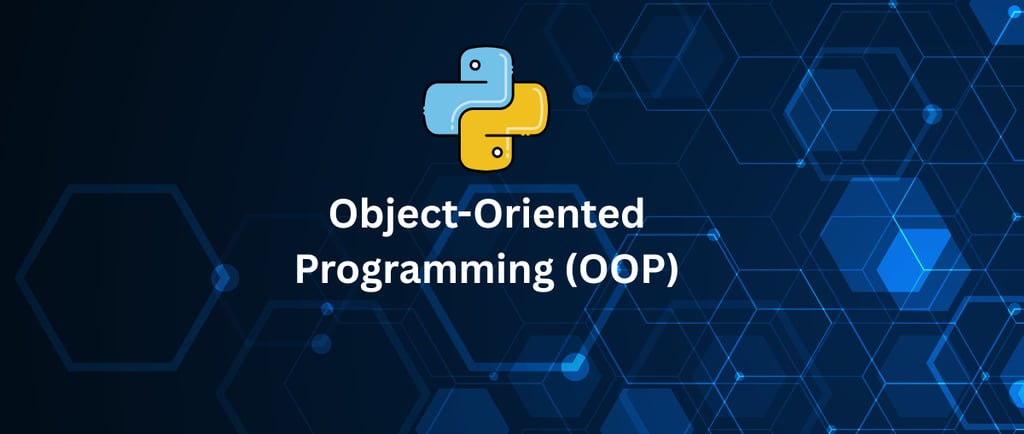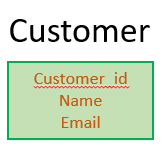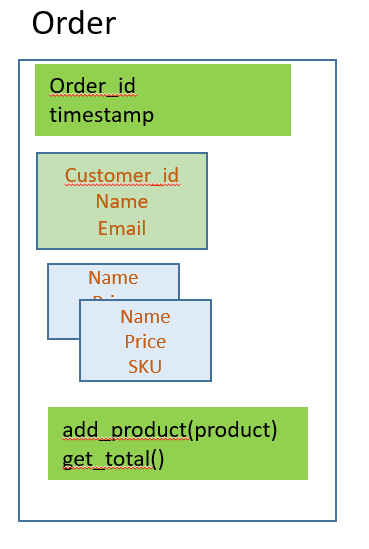Object-Oriented Programming in Python: A Real-Time Sales Data Example
PYTHON
5/7/20254 min read


In today’s data-driven world, businesses deal with real-time data streams—from customer orders to inventory updates. Managing this data efficiently requires clean, maintainable code. That's where Object-Oriented Programming (OOP) shines.
In this blog post, we’ll explore the fundamentals of OOP in Python using a sales system as our real-world example. Whether you're new to OOP or looking to solidify your understanding, this guide walks through classes, objects, inheritance, and encapsulation in a practical context.
📌 What is Object-Oriented Programming?
OOP is a programming paradigm that structures code using "objects"—instances of "classes" that bundle data and behavior.
Core concepts of OOP:
Class: A blueprint for creating objects.
Object: An instance of a class.
Encapsulation: Bundling data with methods that operate on that data.
Inheritance: A class can inherit attributes and methods from another class.
Polymorphism: Objects can take many forms depending on their class hierarchy.
Let’s bring this to life with a sales system example.
🔄 Scenario: Real-Time Sales Data
Imagine you work for an e-commerce platform. Every time a customer makes a purchase, the system records data such as:
Customer info
Products purchased
Payment details
Timestamp
Let’s model this using OOP.
🧱 Step 1: Define the Product Class
class Product:
def init(self, name, price, sku):
self.name = name
self.price = price
self.sku = sku
def str(self):
return f"{self.name} (${self.price})"
This class represents a product in your system. Each product has a name, price, and stock-keeping unit (SKU).
Explanation:
class Product:
This defines a new class called Product, a template for creating product objects.def init(self, name, price, sku):
The constructor method. It’s called automatically when you create a new Product object. It takes in 3 parameters: name, price, and sku.self.name = name, etc.
These lines assign the input parameters to instance variables. This is how the object keeps track of its own data.def str(self):
This method is called when you print the object. It returns a string representation like Wireless Mouse ($29.99).
👥 Step 2: Define the Customer Class
class Customer:
def init(self, customer_id, name, email):
self.customer_id = customer_id
self.name = name
self.email = email
def str(self):
return f"{self.name} ({self.email})"
Here’s how we encapsulate customer data.
Explanation:
This class is similar to Product but represents a customer.
customer_id, name, and email are stored as instance variables.
The str() method lets us nicely print the customer as Alice Smith (alice@example.com).
🛒 Step 3: Define the Order Class
from datetime import datetime
class Order:
def init(self, order_id, customer):
self.order_id = order_id
self.customer = customer
self.products = []
self.timestamp = datetime.now()
def add_product(self, product):
self.products.append(product)
def get_total(self):
return sum(product.price for product in self.products)
def str(self):
product_list = ", ".join(str(p) for p in self.products)
return (f"Order #{self.order_id} by {self.customer.name}:\n"
f"Products: {product_list}\n"
f"Total: ${self.get_total():.2f}\n"
f"Timestamp: {self.timestamp}")
This class shows how OOP can help organize multiple data points into a coherent structure.
Explanation:
from datetime import datetime
Imports Python's datetime module so we can timestamp orders.class Order:
Defines an order, which connects a customer to one or more products.init() sets up the order:
order_id: Unique ID for the order.
customer: A Customer object.
products: An empty list that will store Product objects.
timestamp: When the order is created.
add_product(self, product)
Appends a product to the products list.get_total()
Calculates the total price by summing up all product.price values.str()
Prepares a formatted summary of the order including:Customer name
List of product names with prices
Total amount
Order timestamp
🔹 4. Simulating a Sale
# Create some products
p1 = Product("Wireless Mouse", 29.99, "MOUSE123")
p2 = Product("Keyboard", 49.99, "KEYB456")
# Create a customer
cust = Customer(1, "Alice Smith", "alice@example.com")
# Create an order
order = Order(101, cust)
order.add_product(p1)
order.add_product(p2)
# Print order summary
print(order)
Output:
Order #101 by Alice Smith:
Products: Wireless Mouse ($29.99), Keyboard ($49.99)
Total: $79.98
Timestamp: 2025-05-07 14:23:01.456789
Explanation:
p1 and p2 are two product objects with names, prices, and SKUs.
cust is a customer object representing Alice Smith.
order = Order(101, cust)
Creates a new order with ID 101 for Alice.order.add_product(p1)
Adds the wireless mouse to the order.order.add_product(p2)
Adds the keyboard to the order.print(order)
Calls the str() method and prints a full summary of the order.
🚀 Benefits of Using OOP Here
Maintainability: Each class handles a specific responsibility.
Scalability: Add new features (like discounts, order tracking) with minimal changes.
Reusability: You can reuse and extend classes across multiple projects.
✍️ Conclusion
Using OOP to manage real-time sales data helps keep your code organized, readable, and scalable. By modeling real-world entities—like products, customers, and orders—you build systems that are closer to how we think about data.
Whether you're building a small app or a large e-commerce backend, OOP in Python is a great tool to have in your toolkit.








Kishore Babu Valluri
Senior Data Scientist | Freelance Consultant | AI/ML & GenAI Expert
With deep expertise in machine learning, artificial intelligence, and Generative AI, I work as a Senior Data Scientist, freelance consultant, and AI agent developer. I help businesses unlock value through intelligent automation, predictive modeling, and cutting-edge AI solutions.
Let's Get in Touch
marketing@deepaiautomation.com
+91 6309397994
© 2025. All rights reserved.
Industries
Manufacturing
Financial Services
Retail
Solutions
DocuMind AI - Intelligent Document Migration
InsightEdge AI - Intelligent Power BI Reporting & Analytics
DCT AI - Digital Control Tower for Intelligent Enterprise Visibility
Inventra AI - Intelligent Inventory Optimization Platform
Maintenix AI - Predictive Maintenance Intelligence Platform
PayPredict AI - Intelligent Customer Payment Prediction Platform
SegMind AI - Intelligent Customer Segmentation & RFM Analytics Platform
DataForge AI - Intelligent ETL & Analytics Modernization Platform
DataSense AI - Intelligent Data Quality & Outlier Detection Agent
